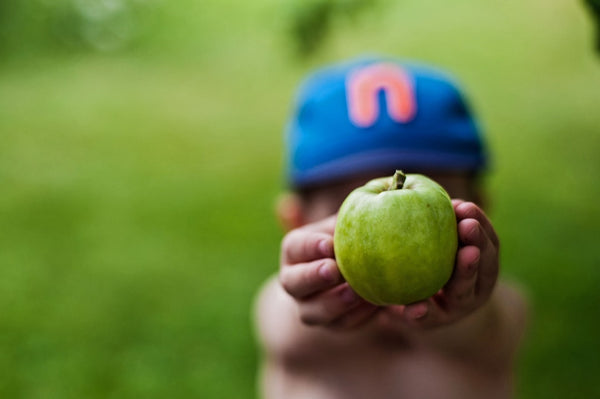5 Natural Ways to Help Your Constipated Toddler Poop (Without Laxatives)
share this article

If your toddler is struggling with hard stools, belly discomfort, or bathroom avoidance, you’re not alone. Constipation is one of the most common concerns parents face, affecting up to 30% of kids at some point [1]. While over-the-counter laxatives may be a temporary fix, many parents prefer gentle, natural strategies to support regularity and long-term digestive health.
Here are 5 natural ways to help your toddler poop without relying on laxatives.
1. Boost Prebiotic Fiber
Prebiotics are special types of fiber that feed the good gut bacteria, helping to soften stool and support smoother digestion. One of the most studied prebiotics for kids is inulin (from chicory root), which has been shown to improve stool frequency and consistency in toddlers and kids [2]. Another powerful prebiotic is 2’-Fucosyllactose (2’-FL)—a Human Milk Oligosaccharide (HMO) that mimics the function of those found in breast milk and supports the growth of Bifidobacteria for gut comfort.
You can find prebiotic-rich foods like bananas, oats, and artichokes. Alternatively, you can also try toddler-safe prebiotic powders like Begin Health’s Growing Up Prebiotics specifically formulated for support with constipation symptoms such as hard stools.
2. Offer More Water (and Water-Rich Foods)
Toddlers often don’t drink enough water, which can make stool harder and more difficult to pass. Encourage small, frequent sips throughout the day and include water-rich foods like cucumbers, oranges, watermelon, and smoothies made with yogurt and fruit. Hydration helps fiber do its job by keeping the stool soft and moving through the gut.
3. Use “Potty Power” Foods
Certain whole foods can work wonders for toddler tummies. Look for:
-
Prunes – Rich in sorbitol and fiber, they’re a natural stool softener. Try prune purée or mix into oatmeal.
-
Pears – Contain both fiber and sorbitol, and are gentle on little stomachs.
-
Kiwi – Studies show kiwi helps with stool regularity and softness in both adults and children [3].
These foods are easy to offer on their own or blended into snacks your toddler already loves.
4. Encourage Regular Movement
Physical activity can help stimulate digestion and bowel movements. Encourage daily playtime, stretching, toddler yoga, or simply walks outside. Even light movement helps food move through the gut more efficiently.
5. Build a Pooping Routine
Toddlers thrive on routine. Try encouraging your kid to sit on the potty for a few relaxed minutes after meals (when the body’s natural “gastrocolic reflex” kicks in). Make it fun: use books, songs, or reward charts. Never pressure them, just give them a chance to go at the same time each day.
Summary
You don’t need harsh laxatives to help your toddler poop. Natural strategies like prebiotic fiber, water-rich foods, “poop-friendly” fruits, movement, and bathroom routines can gently get things flowing again. If constipation persists or worsens, consult your pediatrician for guidance.
















